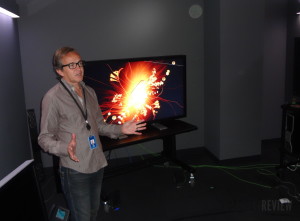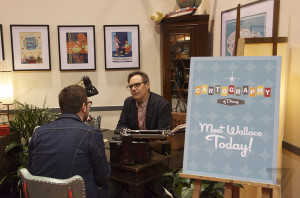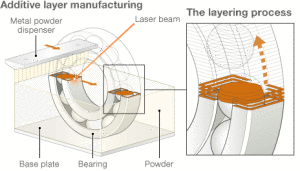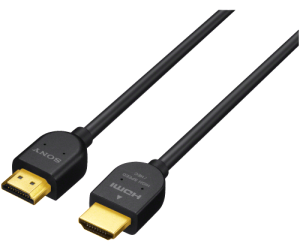THESE SMART GLASSES COULD HELP BLIND PEOPLE SEE
The special glasses, developed by Stephen Hicks, a research fellow in neuroscience and visual prosthetics at the University of Oxford, use two cameras in combination with an infrared projector to detect nearby objects. They also have a gyroscope, a compass, and a GPS to help orient the wearer. Images that are created through this data are then projected on transparent OLEDs in high-contrast color in shades that can be modified to suit the wearer's preferences.
Hicks has won the Royal Society's Brian Mercer Award for Innovation for the work--£50,000, which we hope can fast track his project to the public.
See the full story here: http://www.fastcompany.com/3021034/fast-feed/these-smart-glasses-could-help-blind-people-see
HP’s 3-D Printer Is a Marvel That You Probably Won’t Own
But don’t expect printing to replace mass production. Basiliere says his hearing aid illustrates the role 3-D printing will likely have in manufacturing: the speaker can be standardized because the same type works for everyone, but its plastic casing is printed to fit his ear. “It’s a great example of how part of the unit is mass produced, part of it is highly personalized.”
HP to enter 3D printer market in mid-2014 says CEO Meg Whitman
 The things HP's boffins are considering is the time it takes to print an object. "To print a bottle can take eight to ten hours. That's all very interesting, but it is like watching ice melt," she said. Lower cost is also on the agenda.
The things HP's boffins are considering is the time it takes to print an object. "To print a bottle can take eight to ten hours. That's all very interesting, but it is like watching ice melt," she said. Lower cost is also on the agenda.
"3D printing is in its infancy" she said. "It is a big opportunity and we are all over it. We will have something by the middle of next year."
See the full story here: http://www.theregister.co.uk/2013/10/23/hp_to_enter_3d_printer_market_in_mid2014_says_meg_whitman/
ShowEast: Laser Projectors Take Center Stage
On Wednesday at ShowEast, Christie and Dolby are teaming up for a demonstration featuring Christie’s prototype 4K laser projector, fronted by a RealD XL Cinema System and accompanied by Christie Vive Audio speakers and amplifiers configured for Dolby Atmos.
Last summer Christie announced that it received a US FDA approval of a variance allowing the sale of these laser projectors for use in a cinema. The first is scheduled to be installed in Seattle's Cinerama Theatre in early 2014.
Barco has already developed a prototype laser projector, but the company believes the economics don’t work at this stage.
Similarly Sony is developing a laser projector, though its execs have stated that the company believes the market is still several years away.
See the full story here: http://www.hollywoodreporter.com/behind-screen/showeast-laser-projectors-take-center-649314
Amaze project aims to take 3D printing ‘into metal age’
Tungsten alloy components that can withstand temperatures of 3,000C were unveiled at Amaze's launch on Tuesday at London's Science Museum.
At such extreme temperatures they can survive inside nuclear fusion reactors and on the nozzles of rockets.
"We want to build the best quality metal products ever made. Objects you can't possibly manufacture any other way," said David Jarvis, Esa's head of new materials and energy research.
- Computer-aided design software determines shape of 3D model using cross-sections
- Laser etches the shape of cross-section into metal powder and heats it so it solidifies and creates a solid layer
- More powder is spread to create the next layer and so on until the 3D object is created
- By leaving one non-solid layer in between, interlocking structures can be created
See the full story here: http://www.bbc.co.uk/news/science-environment-24528306
castAR: the most versatile AR & VR system
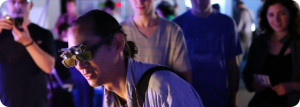
What is castAR?
castAR is a projected augmented reality system that displays holographic-like 3D projections right in front of you. Star Wars: Episode IV – A New Hope sparked our imaginations of what might be possible in the future by showing R2-D2 and Chewbacca playing a holographic 3D chess-style game. It has taken nearly 35 years since the film was released for this technological dream to come to reality, but with castAR, that reality can be yours.
castAR includes a very fast and highly precise tracking solution, allowing you to change your experience by holding your 3D world in place while you are free to move around in it.
See the source video here: http://www.kickstarter.com/projects/technicalillusions/castar-the-most-versatile-ar-and-vr-system
3D Cinema Firm Looks to Russia to Boost Fading Business
Beverly Hills-based RealD announced Thursday that it had struck a deal with Russia’s Cinema Park to equip up to 200 of the chain’s screens with 3D technology, the Los Angeles Timesreported.
Meanwhile, under deals agreed earlier this year, RealD is already in the process of installing more than 300 3D screens in cinemas owned by rival Russian cinema chains Karo Film and Kinomax according to The Hollywood Reporter.
RealD is also bringing its “LUXE” large screens, a rival to the popular IMAX format to Russia, with plans to open the first for Cinema Park in St. Petersburg this winter, with a further 10 slated for auditoriums owned by Karo Film, The Hollywood Reporter added.
RealD’s Russian deals come at a time of difficulty for the company, which produces the world’s most widely used 3D cinema technology. Shares in the firm have fallen 40 percent this year as moviegoers seem to be losing their taste for 3D, the LA Times reported Thursday.
See the full story here: http://en.ria.ru/russia/20131011/184078574/3D-Cinema-Firm-Looks-to-Russia-to-Boost-Fading-Business.html
High Speed 4K/3D/Ethernet HDMI 1.4 Cable – 3
[Philip Lelyveld comment: its nice that they are selling cables that have the bandwidth to carry the full signal to the sets that they are selling.]
See the full post here: http://store.sony.com/high-speed-4k-3d-ethernet-hdmi-1.4-cable-3-zid27-DLCHJ9/cat-27-catid-All-TV-AV-Cables
Monthly Webcast- An Introduction to Holographic Television
Widespread recognition of some shortcomings of "traditional" 3D TV, and some recent technological advances, create an opportunity for holographic 3D TV for entertainment, telepresence, and teleoperation. In this webcast I'll review perceptual considerations for 3D TV, explain what true holographic television is (and how to distinguish it from things that marketers call holographic), as well as describe how recent developments in image capture, standardization, and computation may bring holographic television to market affordably sooner than many have predicted, co-existing with other kinds of 3D TV. I'll also explain the range of light-modulation technologies that various research groups (including mine) are exploring as part of developing holographic video display systems.
V. Michael Bove, Jr. holds an S.B.E.E., an S.M. in Visual Studies, and a Ph.D. in Media Technology, all from the Massachusetts Institute of Technology, where he is currently head of the Object-Based Media Group at the Media Laboratory.
See the full post with registration info here: http://events.r20.constantcontact.com/register/event?llr=iwnzoxjab&oeidk=a07e7yemomp5a708224
First Look: Dolby 3D
Dolby 3D technology has two main components. One focuses on a format that allows all the necessary information to be brought to the display to perform at its best, using the current infrastructure. An example was shown at CES and IBC where the Dolby 3D format was showcased using the Vudu service as well Akamai, uploading Dolby 3D movies on their servers and streaming it live through an on demand application.
The second component resides in the display where the frames are generated using the information mentioned above and matching it to the specific characteristic of the display, either this is a glasses based 3D TV or a glasses free 3D TV. Dolby 3D always renders and visualizes the best 3D image possible within the specific optical characteristic of the display itself.
What does the content need in order to function as Dolby 3D?
The Dolby 3D format requires the content to already be in 3D, it is not a 2D to 3D conversion technology. What Dolby 3D allows is to bring more data to the 3D displays so that the 3D image is higher quality. For example the FCFR (frame compatible full resolution) module allow to bring full resolution left and right image to the current 3D TVs enabling a much higher resolution when in 3D mode compared to the current side by side format. More specifically for 3D glasses free display, Dolby 3D allows additional important data like depth map of the frame, to be transmitted to the display enabling a much higher quality when the video is visualized on the screen.
See the full article here: http://www.gadgetreview.com/home-theater/first-look-dolby-3d